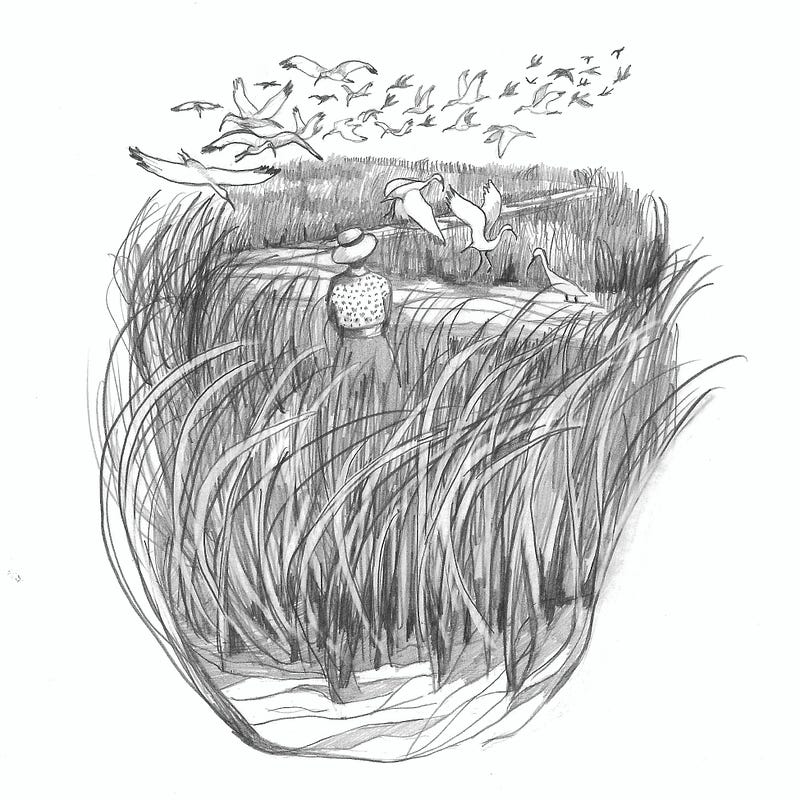Marjory Stoneman Douglas (b. 1890–d. 1998) is now regarded as one of the most important figures in conservation. She was also a tireless fighter for and defender of civil rights and public safety, helping countless people to have safe, running water and indoor plumbing. Awarded the Presidential Medal of Freedom in 1993, she died in 1998 at the age of 108.

They called it a swamp. They thought it was a stagnant muck that was worthless as it was. So they wanted to drain it, to turn it into something they felt was more valuable: land for real estate and farming. But Marjory Stoneman Douglas, a journalist and activist, viewed this place as special. The Native Americans called it Pa-Hay-Okee (meaning “grassy water”). We know it as the Everglades. And it was Marjory whose voice helped rescue it from being drained, developed, destroyed.
Though not a particularly outdoorsy person, she immersed herself in the Everglades and wrote the definitive book on it (entitled Everglades: River of Grass, 1947). She researched tirelessly, consulting with scientists, historians, and Native Americans to learn everything she could about the Everglades. Her book showed the world that the Everglades was not a swamp, that the water was not stagnant at all, but a slow-flowing river. She captured the of the place in the opening line of her book by writing, “There are no other Everglades in the world.” She understood — and convinced others — that the Everglades was truly unique.
But, unlike other natural landscapes people love to explore, the Everglades is not a place where a person goes to just wander the wilderness or camp. It is a harsh environment, difficult to penetrate and unwelcoming to visitors. In her memoir, Voice of the River, Marjory writes, “To be a friend of the Everglades is not necessarily to spend time wandering around out there.” In fact, she hardly spent any time out there at all. But, she understood that nature’s value was not just it’s useful as entertainment for people, “I know it’s out there and I know its importance.”
Ultimately her book, along with the efforts of many passionate conservationists, led to the creation of Everglades National Park. But even with the creation of the park, the work was not done. By the late ’60s, Marjory’s book was nearly 20 years old, and she herself 78 and losing her sight, when the real conservation work began. She used her skills and connections as a journalist and activist to persuade others and influence politicians. She spoke to anyone who would listen, and even some who wouldn’t. She helped convey to the public that the Everglades were more than just a beautiful place, and that the gentle water flow in fact was crucial to life in all of south Florida. Perhaps it is a stretch to call Marjory Stoneman Douglas a naturalist in the traditional sense. But she proves that a person’s relationship with nature is not always based on their ability to live in it, but how they live with it.